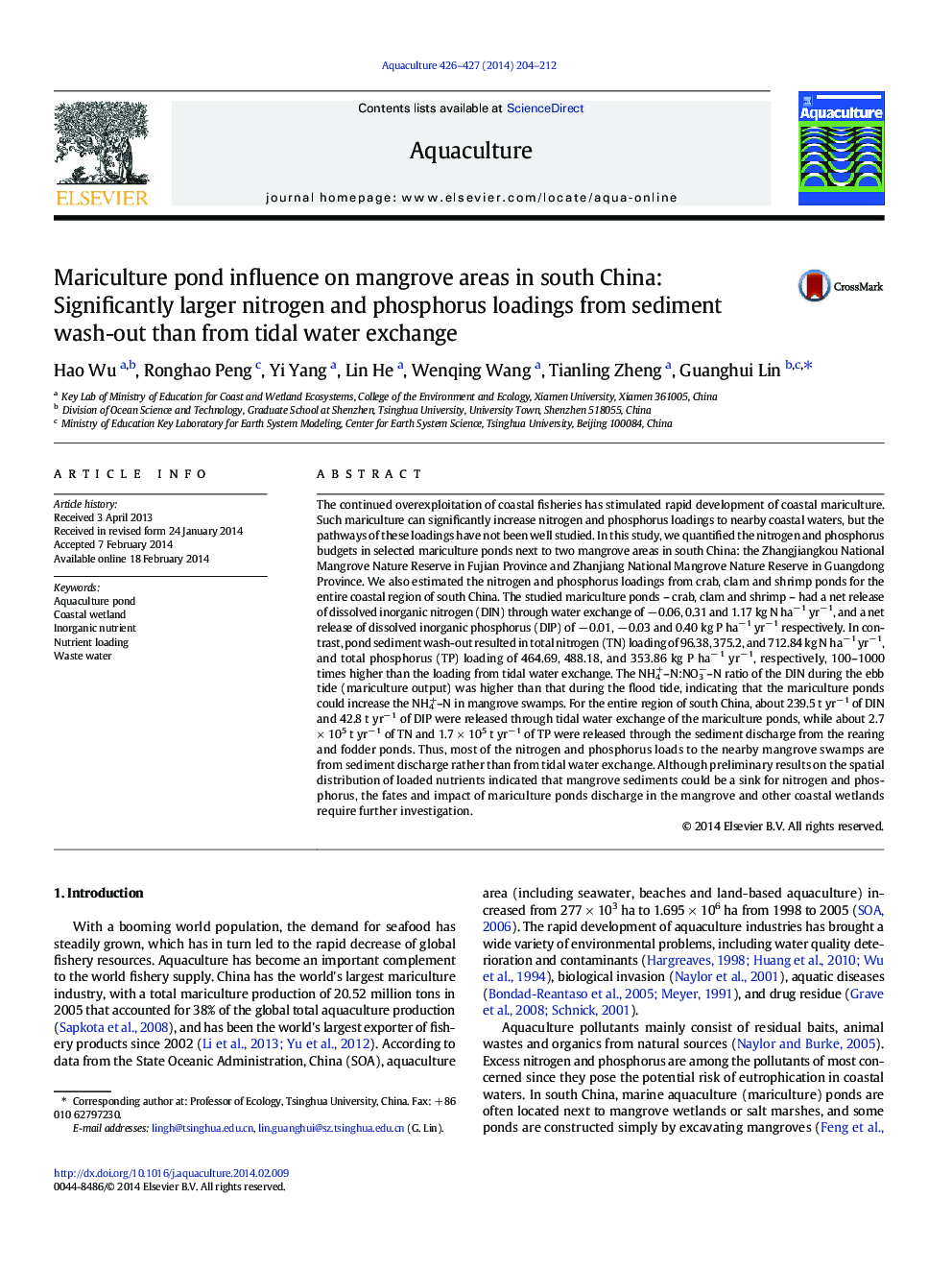| Article ID | Journal | Published Year | Pages | File Type |
|---|---|---|---|---|
| 8495210 | Aquaculture | 2014 | 9 Pages |
Abstract
The continued overexploitation of coastal fisheries has stimulated rapid development of coastal mariculture. Such mariculture can significantly increase nitrogen and phosphorus loadings to nearby coastal waters, but the pathways of these loadings have not been well studied. In this study, we quantified the nitrogen and phosphorus budgets in selected mariculture ponds next to two mangrove areas in south China: the Zhangjiangkou National Mangrove Nature Reserve in Fujian Province and Zhanjiang National Mangrove Nature Reserve in Guangdong Province. We also estimated the nitrogen and phosphorus loadings from crab, clam and shrimp ponds for the entire coastal region of south China. The studied mariculture ponds - crab, clam and shrimp - had a net release of dissolved inorganic nitrogen (DIN) through water exchange of â 0.06, 0.31 and 1.17 kg N haâ 1 yrâ 1, and a net release of dissolved inorganic phosphorus (DIP) of â 0.01, â 0.03 and 0.40 kg P haâ 1 yrâ 1 respectively. In contrast, pond sediment wash-out resulted in total nitrogen (TN) loading of 96.38, 375.2, and 712.84 kg N haâ 1 yrâ 1, and total phosphorus (TP) loading of 464.69, 488.18, and 353.86 kg P haâ 1 yrâ 1, respectively, 100-1000 times higher than the loading from tidal water exchange. The NH4+-N:NO3â-N ratio of the DIN during the ebb tide (mariculture output) was higher than that during the flood tide, indicating that the mariculture ponds could increase the NH4+-N in mangrove swamps. For the entire region of south China, about 239.5 t yrâ 1 of DIN and 42.8 t yrâ 1 of DIP were released through tidal water exchange of the mariculture ponds, while about 2.7 Ã 105 t yrâ 1 of TN and 1.7 Ã 105 t yrâ 1 of TP were released through the sediment discharge from the rearing and fodder ponds. Thus, most of the nitrogen and phosphorus loads to the nearby mangrove swamps are from sediment discharge rather than from tidal water exchange. Although preliminary results on the spatial distribution of loaded nutrients indicated that mangrove sediments could be a sink for nitrogen and phosphorus, the fates and impact of mariculture ponds discharge in the mangrove and other coastal wetlands require further investigation.
Related Topics
Life Sciences
Agricultural and Biological Sciences
Aquatic Science
Authors
Hao Wu, Ronghao Peng, Yi Yang, Lin He, Wenqing Wang, Tianling Zheng, Guanghui Lin,
